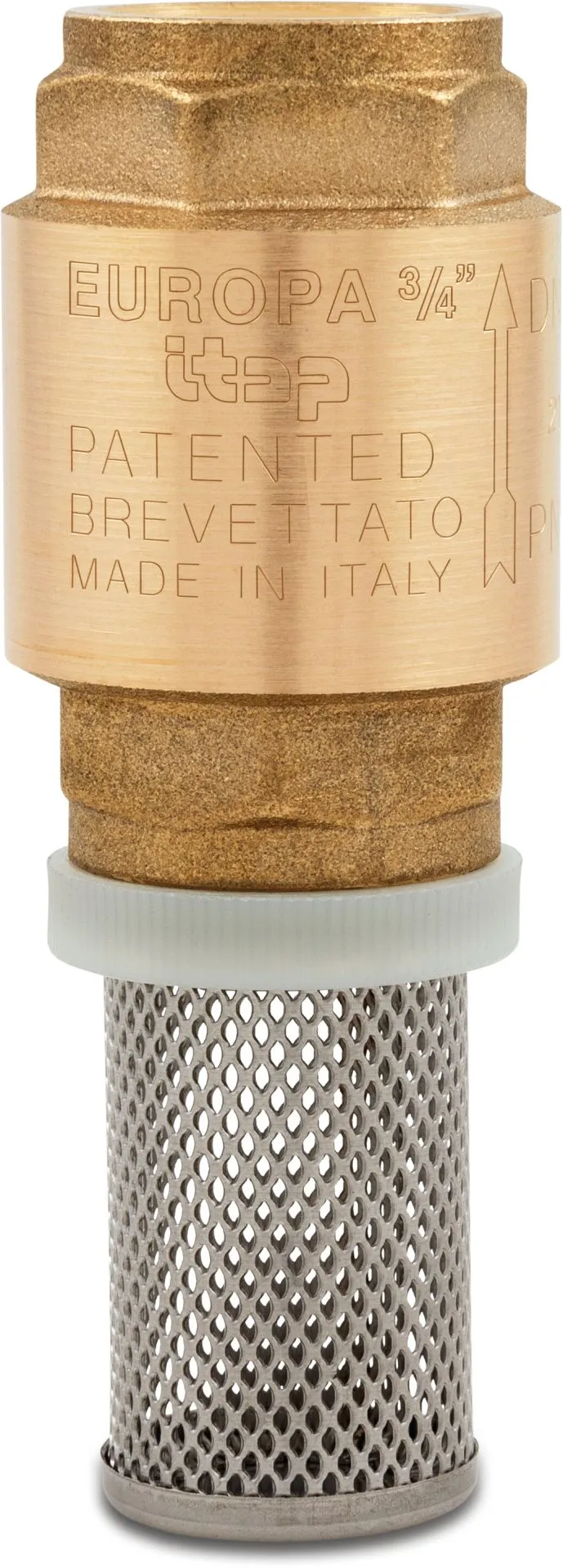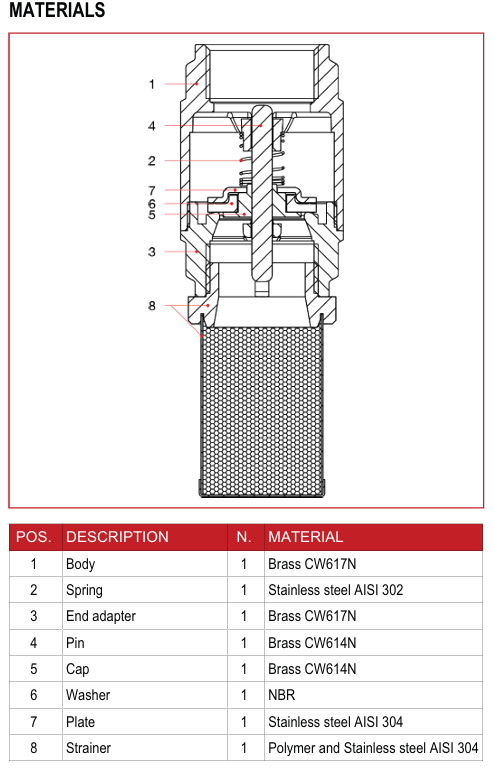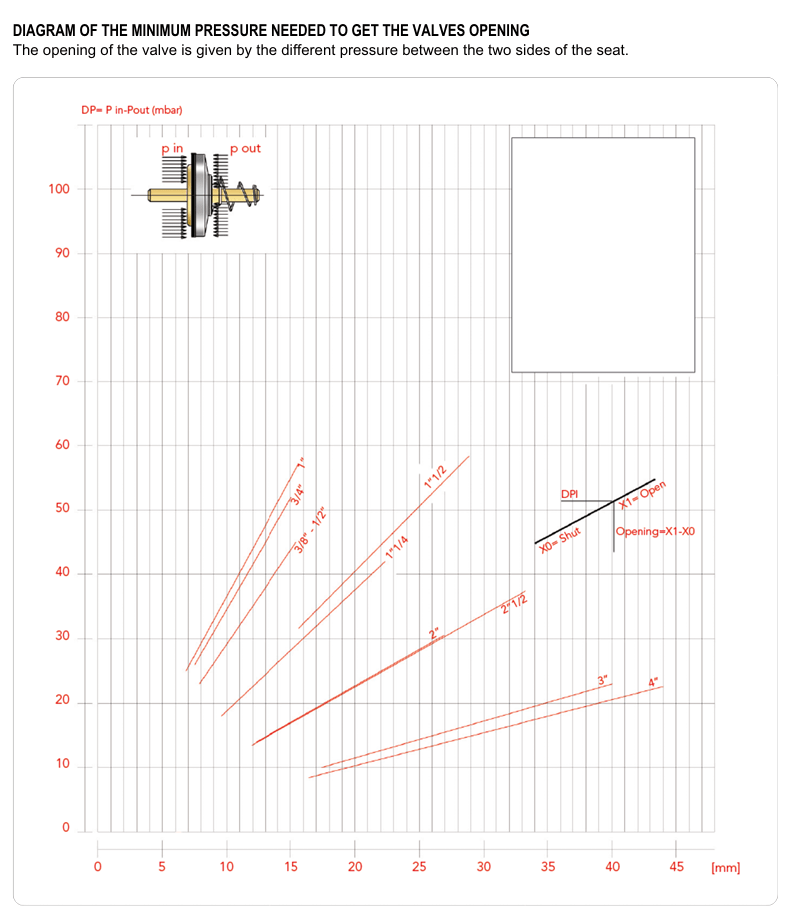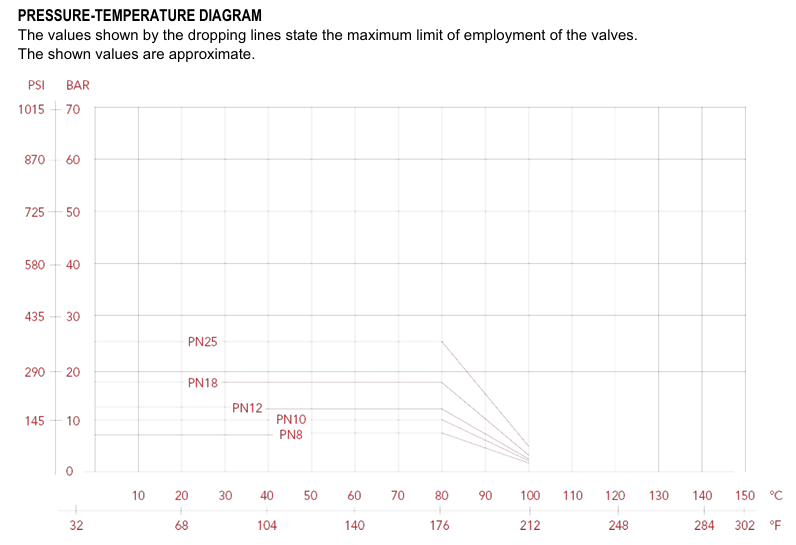Itap Bottom valve spring loaded brass with internal thread
Max pressure 25bar
Material of the strainer is stainless steel
TECHNICAL SPECIFICATIONS
Brass main body. Stainless steel plate. Washer in NBR. Spring: stainless steel. Strainer in polymer and stainless steel.
Filtration degree:
3/8″ to 2″: 1200µm;
2″1/2 to 4″: 2000µm
Minimum and maximum working temperature: -20°C, 100°C.
Threads: ISO 228 (equivalent to DIN EN ISO 228 and BS EN ISO 228). Also available with NPT thread in sizes 2″1/2, 3″ and 4″
INSTALLATION
EUROPA® check valves are unidirectional, which means that they only allow flow in one direction, marked with an arrow on the valve body.
The valves consist of a spring, a small valve and two brass parts (body and end adapter) that enclose these and are assembled with threads and sealing material to achieve their function.
In order to avoid damaging the sealing material and thus losing the connection between the body and the end fitting, torque on the two parts must be avoided.
When installing, normal hydraulic procedures should be followed, in particular:
-
For proper installation near bends and circulation pumps, the valve should be mounted at a distance equal to 10 times the pipe diameter.
-
Check that the pipes are correctly aligned.
-
During assembly, the fitter should use his tools on the end closest to the pipe.
-
Application of sealing material (PTFE tape or flax) should be limited to the thread area. An excess may disturb the sealing surface of the ball gasket and impair the tightness.
-
If the transported medium contains impurities (dust, hard water, etc.), these must be removed or filtered, otherwise they may damage the seal.
DISASSEMBLY
To remove the valve from the pipeline, or before loosening the connections attached to it:
-
Use protective equipment required for handling the medium in question.
-
Depressurize the system.
-
During disassembly, the tool should be applied to the end of the valve closest to the pipe.
MAINTENANCE
Valves should be checked regularly, depending on the application and operating conditions, to ensure proper functioning.
If leakage occurs, this may be due to the deposition of foreign particles (dirt, limescale) on the rubber seal.
To remedy the problem, disassemble the valve and remove the foreign particles with pneumatic tools.





